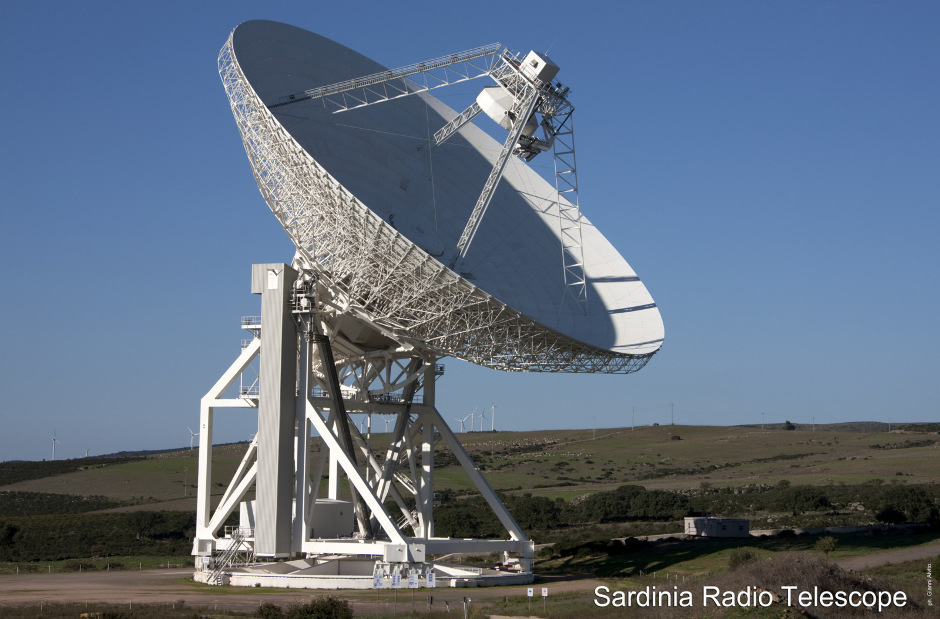Science
Related: About this forumBirthplace’ of a fast radio burst located for the first time
Birthplace’ of a fast radio burst located for the first time
Posted on 25 February 2016 by Astronomy Now

The INAF's 64-metre Sardinia Radio Telescope (SRT). Image credit: Gianni Alvito.
An international team of astronomers, including Marta Burgay, Delphine Perrodin and Andrea Possenti from the Italian National Institute for Astrophysics (INAF), identified for the first time the place of origin of a Fast Radio Burst (FRB), enigmatic radio signals lasting just a few milliseconds, which appear without warning in the sky. The discovery was made thanks to observations done with optical telescopes and radio telescopes and allowed to confirm the current cosmological model describing the distribution of matter in the universe.
It all starts on 18 April 2015, when the typical signal of a FRB is detected by the Commonwealth Scientific and Industrial Research Organisation (CSIRO)’s 64-metre Parkes Radio Telescope in Australia. “In a matter of hours, it has been issued an international alert and various telescopes around the world were involved in the search for the ‘result’ of that signal,” says Evan Keane, Project Scientist at the Square Kilometre Array Organisation, first author of the paper describing the discovery, published in the latest issue of the journal Nature.
The INAF’s Sardinia Radio Telescope (SRT) was among them. “In April 2015, SRT was not in operation at 100 percent as it is today. Thanks to the great work of the INAF team for scientific validation of the radio telescope, SRT has, however, been able to attend promptly to the international campaign,” explains Marta Burgay. “The SRT observations, combined with those of other radio telescopes single disc, have ruled out that the FRB is associated with a repetitive cosmic phenomenon.”
Thanks to the Australian Telescope Compact Array’s six 22-metre dishes and their combined resolution, the team was able to pinpoint the location of the signal with much greater accuracy than has been possible in the past and detected a radio afterglow that lasted for around 6 days before fading away. This afterglow enabled them to pinpoint the location of the FRB about 1000 times more precisely than for previous events.
More:
http://astronomynow.com/2016/02/25/birthplace-of-a-fast-radio-burst-located-for-the-first-time/
saturnsring
(1,832 posts)cool stuff thanks for posting